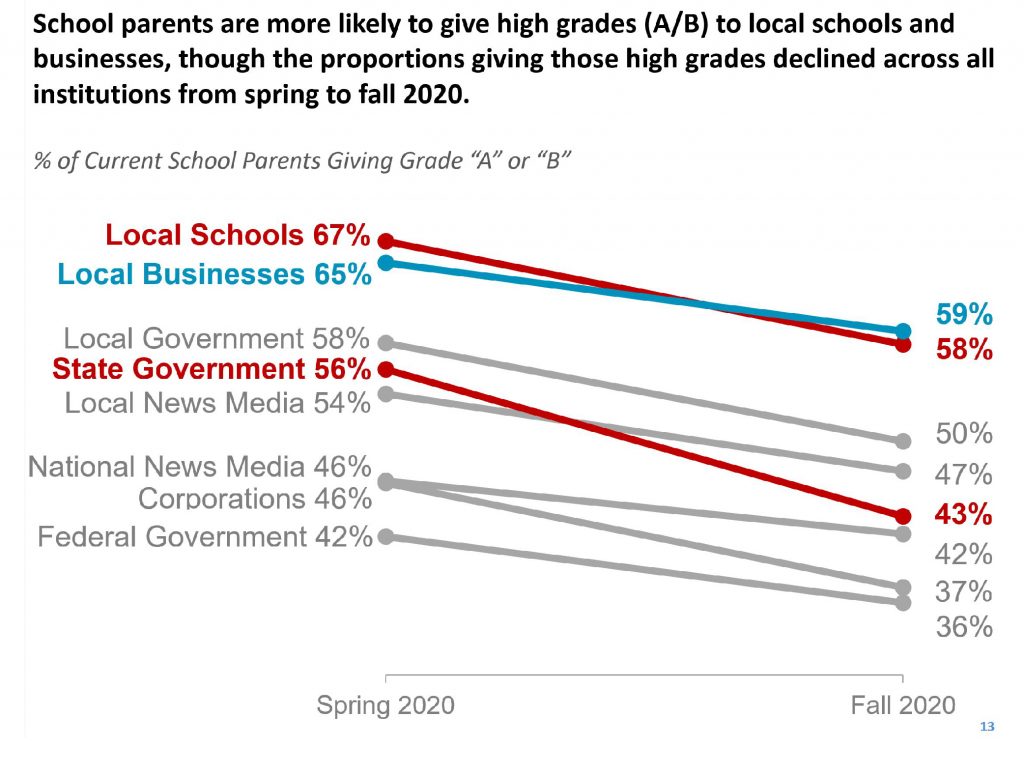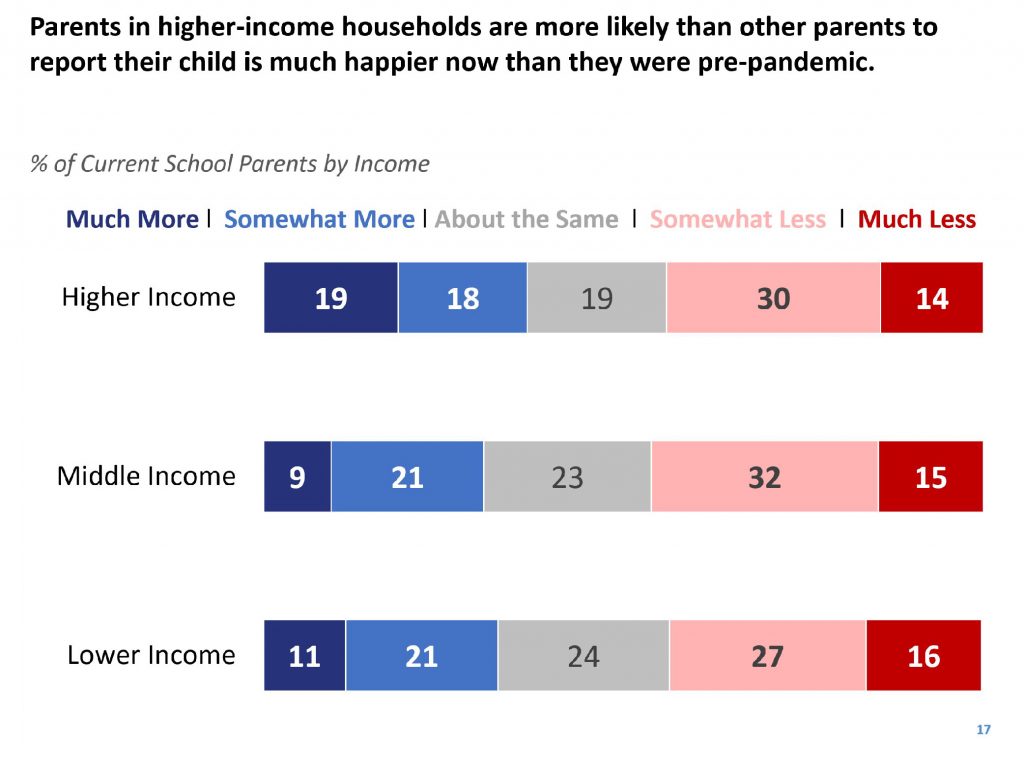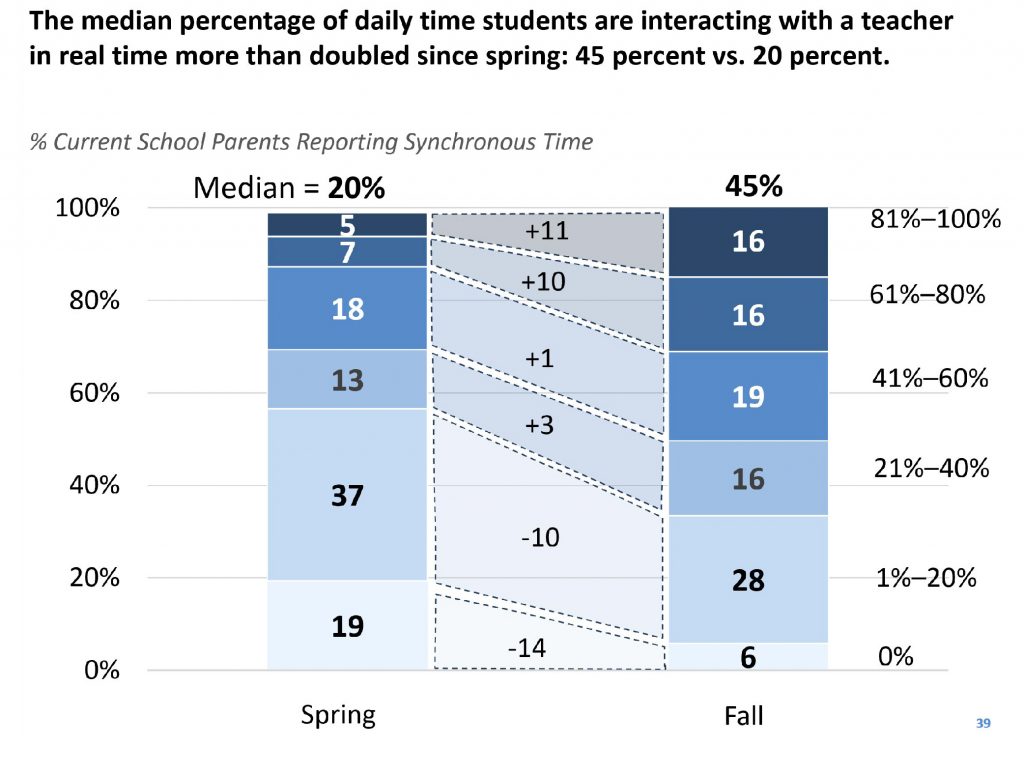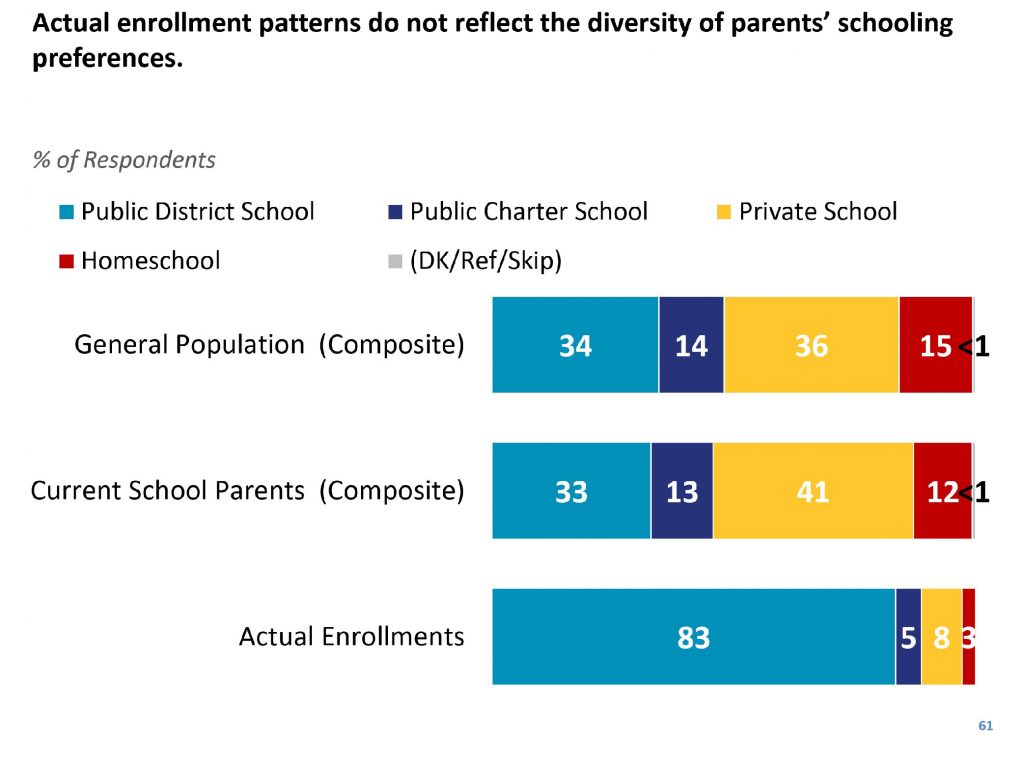2020 Schooling in America Series: Changing Perception on Schools and Record Support for School Choice
In a year unlike any in recent memory, how much can public opinion on K–12 education policy and school choice change in four months? When it comes to topics like rating government and educational institutions, child stress and happiness levels and time students spend interacting virtually with teachers, the answer is quite a bit.
Following up on a late spring series of surveys on education experiences and opinions during the early days of the COVID-19 pandemic, EdChoice released for the first time a second wave of its annual Schooling in America survey in order to gauge public and parental opinions during a fall semester that was ever-changing for education stakeholders.
Perhaps exacerbated by “pandemic fatigue,” parents and the general public alike were less likely to give high marks to various institutions. The proportion of Americans grading local schools an “A” or “B” fell from about two-thirds (68%) to roughly half (49%) from spring to fall, with school parents’ grades for schools also declining (albeit not as sharply) by nine percentage points. Within the classroom, the RAND Corporation also found teacher perceptions and satisfaction have decreased during the pandemic in the form of lowered morale and higher burnout—just a third of teachers in its survey said they were satisfied with the instruction decisions of schools during the fall semester.

Teachers weren’t the only ones feeling some form of burnout. Parents in the fall were more likely to say their children were more stressed and less happy compared to before the pandemic, with the amount of parents reporting “much” or “somewhat” more student stress increasing by 8 percent since the spring semester. It remains to be seen whether these concerning stress and happiness levels will impact an increased trend in substance abuse issues—such as vaping, alcohol and opioids—in American schools, which the 2020 PDK Poll found large majorities of Americans and parents viewed as a “crisis” or a “serious concern.”
Student stress levels weren’t the same across demographic groups, though. Parents of charter (52% “much” or “somewhat more” stressed) and homeschool (53%) students were slightly less likely to indicate stress levels had increased when compared to other schooling sectors, while high-income parents (19%) were more likely than middle- (9%) and low-income (11%) ones to report “much” higher fall happiness levels as compared to before the pandemic.

Concern regarding safety and pandemic-related impacts on schools remained high since the spring. Nearly four in 10 parents (37%) were “extremely” concerned about their children getting exposed to the coronavirus, while 30 percent expressed the same level of concern that their children would be socially isolated as well as fall behind academically due to pandemic-related school closures.
Meanwhile, nearly a fourth (23%) of parents reported being “slightly” or “not at all” prepared to facilitate virtual learning in the fall. This tracks with both polling and anecdotal evidence from parents nationwide, while student learning loss seem poised to precipitate until school can fully and safely reopen—even as EdChoice found an increase in time students spent interacting with teachers and doing schoolwork from the spring to the fall.

The types of schools parents want for their children when they safely reopen are as varied as schools’ approaches to fall instruction and opening. Parents were more likely to prefer private (41%), charter (13%), and home school (12%) for their children when compared to actual enrollments.

Parents wanting different educational settings for their children post-pandemic aligns with record-high support for school choice programs. In our fall survey, education savings accounts (ESAs) received the highest level of public support (81%) of any education choice policy in the eight years EdChoice has been polling the policy. Both support and opposition for school vouchers were likewise at all-time highs, while support for tax-credit scholarships (78%) increased significantly since 2019. These support levels were higher than those reported by PDK in its spring poll, which found a majority (53%) of Americans supported some form of private school choice, while the Manhattan Institute found in the fall that between 46 and 52 percent of voters in political battleground states believed giving parents the right to choose their children’s school would raise the overall quality of K–12 education in America.
Click here to read the second post about the results of the fall wave of our Schooling in America survey, where we dive into findings about learning pods and changing views on homeschooling during the pandemic.




